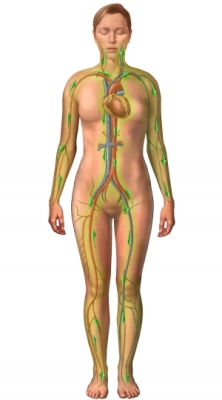Catheter-related bloodstream infections – Infection, associated with a central venous catheter
Description of catheter-related bloodstream infections
Catheter-related bloodstream infections (Teaspoon) there, When bacteria get into the bloodstream through a central venous catheter. The central catheter – long, a thin tube, which is introduced into the body through a vein, and reaches a large vein near the heart. It is used for drug delivery, feeding, fluids and preparations Chemotherapy.
If the bacteria are in the central catheter tube, they can easily get into the blood and cause serious infections. This may lead to a condition, called sepsis, When bacteria cause septicemia. If you suspect, that you have this disease, immediately seek medical advice.

Causes of infection, associated with central venous catheter
Bacteria normally live on the skin. Sometimes they may get into the catheter and into the bloodstream.
Risk factors for infection, associated with central venous catheter
Factors, which can increase the risk of catheter-related bloodstream infections:
- The presence of a catheter for a very long time;
- The catheter is coated with antimicrobial agents not;
- The catheter installed into a vein thigh;
- Weakened immune system;
- Being in the intensive care unit;
- The presence of infection in other parts of the body or skin.
The symptoms of catheter-related bloodstream infections
These symptoms, except for catheter-related bloodstream infections, They may be caused by other diseases. If you experience any of them, should see a doctor.
- Fever;
- Chills;
- Fast heart rate;
- Redness, swelling or tenderness at the catheter insertion site;
- Discharge from the catheter.
Diagnosis of catheter-related bloodstream infections
The doctor will ask about your symptoms and medical history, and perform a physical examination.
Tests may include the following:
- Blood tests and bacterial culture – to examine the state of the blood cells and determine the presence of bacteria;
- Other cultures – Urine, sputum and / or skin, to check for infection;
- Echocardiogram – to determine, Whether the bacteria reached the heart valves.
Treatment of catheter-related bloodstream infections
Options for treatment of catheter-related bloodstream infections include:
- Antibiotics – medicines, used for the treatment of infections. Kind of take antibiotics depends on bacteria, which are found in the blood;
- Replacement of the central catheter – Central catheter should be removed and replaced with a new catheter.
Prevention of catheter-related bloodstream infections
In the hospital
For the hospital staff – before installing a central venous catheter, to reduce the risk of infection, Observe the following precautions:
- Carefully choose a safe place, to insert a catheter;
- Wash your hands or use hand sanitizer;
- Wear a gown, mask, gloves and cover your hair;
- Clean the area of the catheter antiseptic and cover it with a sterile dressing.
After, the central venous catheter installed:
- Wash your hands thoroughly and wear gloves, before touching the catheter or changing the bandage in place of its installation;
- Use an antiseptic to clean the catheter area;
- Take precautions when handling medicine, fluids or nutrition, which will be introduced through the catheter;
- Keep the catheter set as much, as necessary;
- Check daily catheter insertion and place it for signs of infection;
- Do not allow visitors into the hospital room during dressing changes.
Steps, you can take, to reduce the risk of infection:
- Ask the staff to take every precaution, to prevent infection;
- Tell the staff, If you need to replace the bandage, or if the insertion was red and sore;
- Ask each visitor at the entrance to the ward to wash your hands. Do not let visitors touch the catheter.
At home
- Follow all the doctor's instructions, on central catheter;
- Find Out, how to care for the catheter. Adhere to the following general principles:
- Follow the instructions on the washing in the shower and bath;
- Before touching the catheter, You need to wash their hands or use hand sanitizer. Wear gloves when touching the area of insertion;
- Change the bandage, as indicated by a physician;
- Wipe the outer surface of the catheter with an antiseptic;
- Do not allow anyone to touch the catheter;
- Check the skin around the insertion of a catheter for signs of infection (eg, redness and swelling at the);
- Consult your doctor, If you think, that you have an infection (eg, developed fever, chills).
